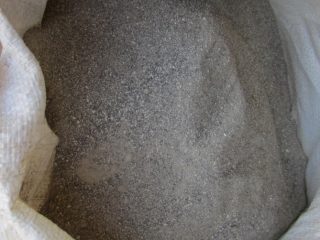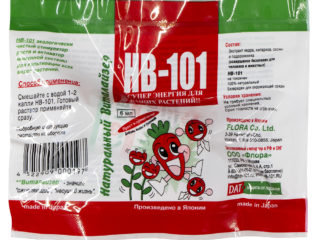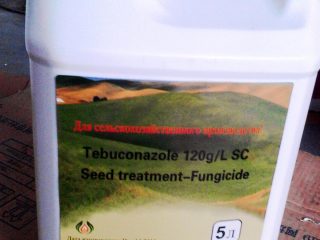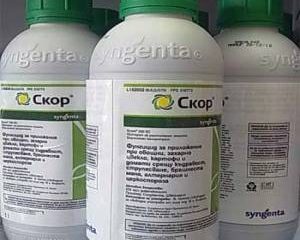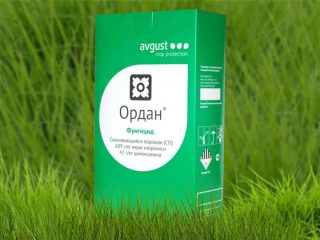Content
- 1 Properties and composition of fertilizer "Kalimagnesia"
- 2 Impact on soil and plants
- 3 Pros and cons of using Kalimagnesia fertilizer
- 4 Methods of adding "Kalimaga"
- 5 Terms of application of "Kalimaga"
- 6 Dosages of making "Kalimagnesia"
- 7 Instructions for the use of fertilizer "Kalimagnesia"
- 8 Compatibility with other fertilizers
- 9 Conclusion
- 10 Reviews on the use of Kalimagnesia
Fertilizer "Kalimagnesia" allows you to improve the properties of soil depleted in trace elements, which affects fertility and allows you to increase the quality and quantity of the crop. But in order for this additive to be as useful as possible and not harm the plants, it is important to use it correctly and know in what quantity and when it is better to use it.
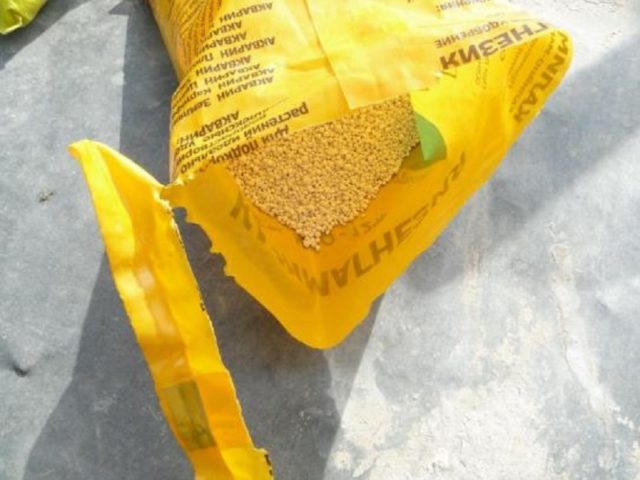
Fertilizer "Kalimagnesia" has a positive effect on most of the soil, enriching them with magnesium and potassium
Properties and composition of fertilizer "Kalimagnesia"
Potassium-magnesia concentrates, depending on the issuing company, can have several names at once: "Kalimagnesia", "Kalimag" or "Potassium magnesia". Also, this fertilizer is called "double salt", since the active elements in it are present in salt form:
- potassium sulfate (K2SO4);
- magnesium sulfate (MgSO4).
In the composition of "Kalimagnesia" the main components are potassium (16-30%) and magnesium (8-18%), sulfur is present as an addition (11-17%).
The share of chlorine obtained during production is minimal and equal to no more than 3%, therefore this fertilizer can be safely attributed to chlorine-free.
The drug is produced in the form of a whitish powder or gray-pink granules, which are odorless and quickly dissolve in water, leaving virtually no sediment.
When applying Kalimag fertilizer, the following properties can be distinguished:
- improving the composition of the soil and increasing its fertility due to the enrichment with magnesium and potassium;
- due to the minimum amount of chlorine, the additive is excellent for garden plants and garden crops that are sensitive to this substance;
- increased growth, fruiting and flowering.
Also, one of the main properties of the Kalimagnesia fertilizer is its easy absorption by plants both by exchange and non-exchange ways.
Impact on soil and plants
Fertilizers "Kalimagnesia" should be used to replenish minerals in depleted and worked-out plots of land. A positive result was found when adding the additive to such types of soils, such as:
- sandy and sandy loam;
- peat, in which there is a lack of sulfur and potassium;
- loamy, with a low content of magnesium and potassium;
- floodplain (alluvial);
- sod-podzolic.
It should also be borne in mind that if the soil has high acidity, then this fertilizer should be applied together with lime.
The impact on the soil of "Kalimagnesia" has the following character:
- restores the balance of trace elements in the composition, which for the better affects fertility;
- reduces the risk of leaching out of magnesium, which is required for the growth of some crops.
Since the application of Kalimagnesia fertilizer improves the composition of the soil, it also affects the plants grown in it. The quality and quantity of the harvest increases. The resistance of plants to various diseases and pests increases.Fruit ripening accelerates. A longer fruiting period was also noted. Autumn feeding affects the resistance of plants to unfavorable conditions, increases the winter hardiness of ornamental and fruit and berry crops, and also improves the laying of flower buds.
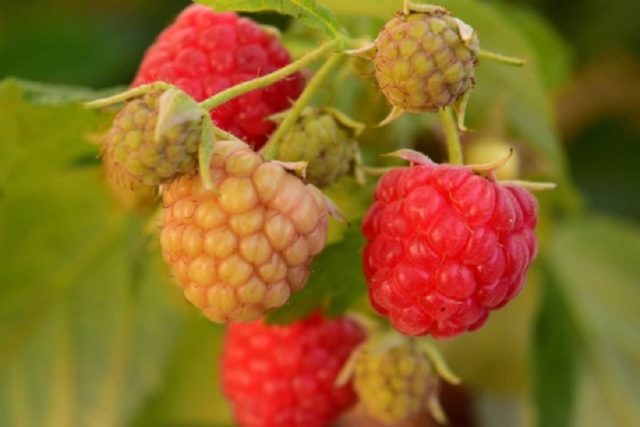
The use of "Kalimagnesia" has a good effect on the benefits and taste of the fruit.
Pros and cons of using Kalimagnesia fertilizer
It is also worth noting a number of advantages and disadvantages of using this drug.
pros | Minuses |
The fertilizer can be used both for application to open ground and as plant nutrition in greenhouse conditions. | Not recommended for introduction into chernozem, loess, chestnut soils and salt licks |
Well absorbed by the soil and an available source of potassium, magnesium and sulfur | If over-applied and incorrectly applied to the soil, it can cause oversaturation with microelements, which will make it unsuitable for growing plants. |
In moderate and small amounts, the drug is useful, it is often used as a prophylactic agent. | If we compare the fertilizer "Kalimagnesia" with chloride or potassium sulfate, then in terms of the content of the main element, it is significantly inferior to them |
The fertilizer can be applied to all types of crops, both perennial and annual |
|
Long-term storage without loss of properties |
|
After being introduced into the soil, the drug can be in it for a long time, since it does not undergo leaching. |
|
The minimum percentage of chlorine content, which makes the fertilizer suitable for those crops that are particularly sensitive to this component |
|
Methods of adding "Kalimaga"
You can feed plants with Kalimag in different ways, which makes this drug universal. It is used dry, as well as a solution for watering and spraying.
Fertilizers "Kalimag" are applied during digging before planting or deep plowing in the fall. Feeding the same plants is carried out by the foliar method and under the root, and the drug can also be used for watering and spraying some vegetable crops throughout the growing season.
Terms of application of "Kalimaga"
The terms of application depend on the type of soil. Usually it is recommended to apply the fertilizer "Kalimagnesia" in the fall in clay areas, in the spring - in light types of soil. Moreover, in the second case, it is required to mix the preparation with wood ash to reinforce the effect.
As a rule, in the spring, fertilizer is injected dry into the near-trunk zone of shrubs and trees, and in the fall, conifers and strawberries are fed in the same way. When planting potatoes, it is recommended to introduce "Kalimagnesia" directly into the hole before laying the planting material, as well as watering at the time of tuber formation.
Ornamental and fruit and berry plants are sprayed during the budding period. Vegetable crops are fed about 2-3 times during the entire growing season under the root and foliar method.
Dosages of making "Kalimagnesia"
The dosage of "Kalimagnesia" when applied may differ significantly from the manufacturer's recommended dosage. It directly depends on the amount and type of macro- and microelements already present in the soil. Also, fertilizer consumption is calculated depending on the time and characteristics of the crops that require feeding.
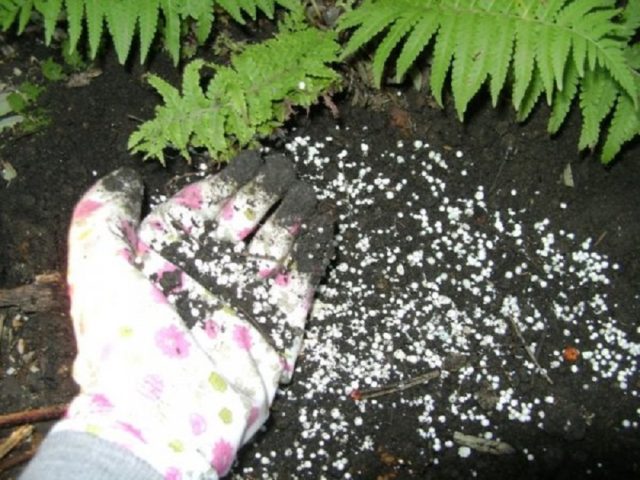
Application rates of the drug depend on which plants and during what period it will be used.
On average, the dosage has the following indicators:
- 20-30 g per 1 sq. m near-trunk area for fruit and berry bushes and trees;
- 15-20 g per 1 sq. m - vegetable crops;
- 20-25 g per 1 sq. m - root crops.
During plowing and digging, the average rate of the applied preparation is:
- in spring - 80-100 g per 10 sq. m;
- in the fall - 150-200 g per 10 sq. m;
- when digging soil in greenhouse conditions - 40-45 g per 10 sq. m.
Instructions for the use of fertilizer "Kalimagnesia"
With the correct fertilization, all garden and horticultural crops respond favorably to feeding. But it is very important to know that some plants need to be fed with a potassium-magnesium preparation only during the growth of green mass and during the budding period. Others need these trace elements throughout the growing season.
For vegetable crops
Vegetable crops in most cases require feeding throughout the growing season, but the instructions for fertilizing are individual for each plant.
For tomatoes, fertilizer "Kalimagnesia" is used before planting during the spring digging - approximately from 100 to 150 g per 10 square meters. m. Further, perform about 4-6 dressings by alternate watering and irrigation at the rate of 10 liters of water - 20 g of the drug.
Cucumbers also respond well to Kalimagnesia fertilizer. It should be introduced when preparing the soil for planting. The dosage of the drug is about 100 g per 1 sq. m. For effective penetration into the soil, it is recommended to apply the substance immediately before watering or rain. After 14-15 days after planting, cucumbers are fed at the rate of 200 g per 100 sq. m, and after another 15 days - 400 g per 100 sq. m.
For potatoes, it is better to feed during planting, 1 tsp. fertilizer in the hole. Then, at the time of hilling, the drug is introduced at the rate of 20 g per 1 sq. m. Also, spraying is carried out during the formation of tubers with a solution of 20 g per 10 liters of water.
It is recommended to apply fertilizers for carrots and beets during planting - approximately 30 g per 1 sq. m. And also to improve the taste and increase root crops, you can perform processing at the time of thickening of the underground part, for this, a solution is used (25 g per 10 liters of water).
Regular and correct application of "Kalimagnesia" for tomatoes, cucumbers and root crops significantly increases the quantity and quality of the crop.
For fruit and berry crops
Fruit and berry crops also need to be fed with potassium-magnesium preparations.
For example, the use of "Kalimagnesia" for grapes is considered the most effective way to improve the quality of fruits, namely, their sugar accumulation. Also, this additive prevents the bunches from drying out and helps the plant survive the winter frosts.
Top dressing of grapes is carried out at least 3-4 times per season. The first is performed by watering with a solution at the rate of 1 tbsp. l. 10 liters of water during the ripening period. Moreover, each bush requires at least one bucket. Further, several more foliar dressings with the same solution are carried out with an interval of 2-3 weeks.
For successful wintering of grapes, it is recommended to use Kalimagnesia in the fall by the method of dry application of 20 g of the preparation into the near-stem zone, followed by loosening and watering.
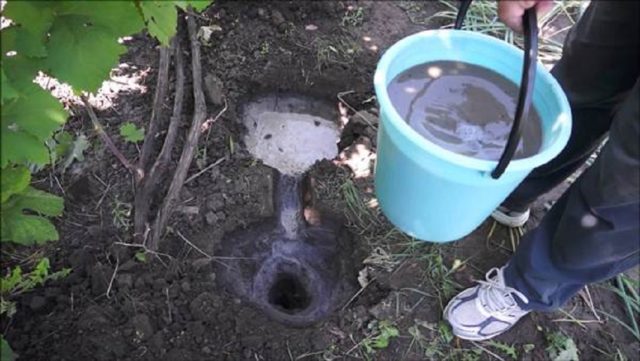
The preparation for grapes is one of the main fertilizers
Raspberry responds well to feeding "Kalimagnesia". It is recommended to bring in during the period of fruit formation at the rate of 15 g per 1 sq. This is done by deepening the preparation by 20 cm along the perimeter of the bushes into the pre-moistened soil.
Kalimagnesia is also used as a complex fertilizer for strawberries, as it needs potassium, which affects metabolic processes. Due to feeding, berries accumulate more vitamins and nutrients.
Fertilizer can be applied to the soil in dry form at the rate of 10-20 g per 1 sq. m, as well as as a solution (30-35 g per 10 liters of water).
For flowers and ornamental shrubs
Due to the absence of chlorine, the product is ideal for feeding many flower crops.
Fertilizer "Kalimagnesia" is used for roses both under the root and by spraying. The dosage in this case directly depends on the type of soil, age and volume of the bush.
In order for top dressing to be as effective as possible, they must be performed strictly on schedule. As a rule, spring fertilization is carried out at the root, deepening the preparation by 15-20 cm into the soil in an amount of 15-30 g per 1 sq. m. Then the bush is sprayed after the first wave of flowering with a solution of 10 g per 10 liters of water. The last dressing for roses "Kalimagnesia" is carried out in the fall again under the root of the bush.
The fertilizer is also recommended for ornamental and wild coniferous shrubs. Top dressing in this case is carried out as needed if the plant lacks nutrients. This is usually indicated by yellowing of the tops of the bush. To replenish minerals, fertilizer is applied to the near-trunk zone at a distance of approximately 45 cm from the trunk at the rate of 35 g per 1 sq. m. The soil is preliminarily watered and loosened.
Compatibility with other fertilizers
The compatibility of Kalimagnesia with other fertilizers is very low. If the dosage is incorrectly calculated, the use of several drugs can lead to soil poisoning, and it will become unsuitable for growing plants in it. Also, do not use urea and pesticides at the same time when adding this supplement.
Conclusion
Fertilizer "Kalimagnesia", if used correctly, brings tangible benefits for garden and horticultural crops. The quality and quantity of the harvest increases, the period of flowering and fruiting increases, and the resistance of plants to diseases and pests improves.
